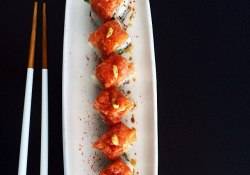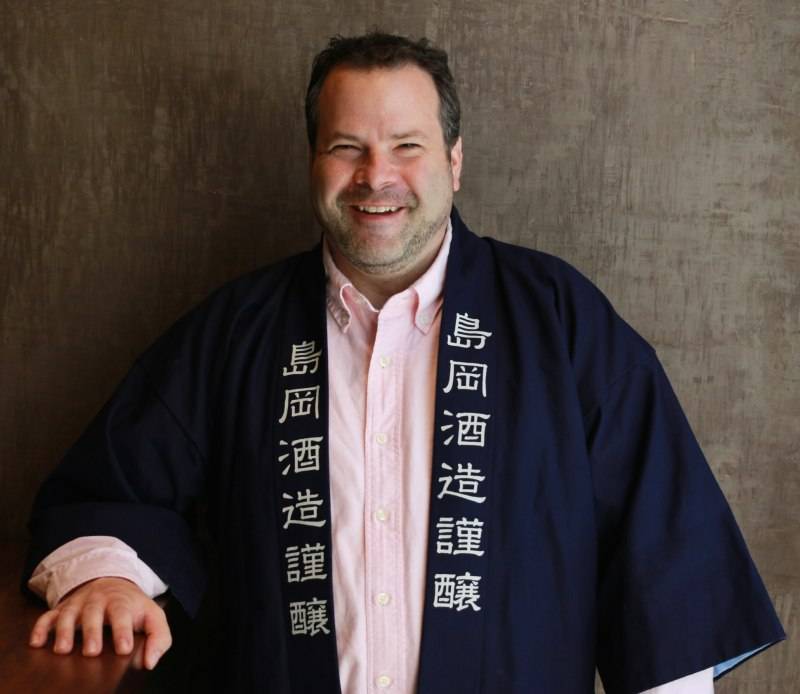If you have yet to dine at Michael Mina’s Japanese restaurant, Pabu in San Francisco’s financial district, stop what you’re doing and make a reservation now. Book a seat at the chef’s sushi counter for the ultimate indulgence in Japanese cuisine. Like all of Mina’s empire, everything at Pabu is of utmost quality and expertise, from the perfectly sliced mackerel gingerly placed atop sticky rice to the carefully curated and extensive list of sake. The sake selection was put together by Stuart Morris, one of the nation’s only people to pass Japan’s intense KikiSake-Shi exam earning him the title of Master Sommelier for sake. Morris first became interested in sake 15 years ago while working in a sushi bar in the U.S. Virgin Islands. Since then, he’s become known for his thoughtful and interesting sake pairings. After a mind-blowing sushi meal at Pabu where the sake flowed and the bites of the freshest raw fish were plentiful, we wanted to learn more about sake, so we reached out to Morris to find out the inside scoop.
First, we asked Morris how to taste sake. Here are his helpful tips:
They way that I taste sake is very similar to how you would taste wine. Start tasting the sake in a white wine glass at a cold temperature. Swirl the glass, smell the sake, look at the color and viscosity. Sip it, breath in through your mouth and then taste it. Try the sake at several different temperatures from cold to room temperature to a warm temperature of about 100 degrees and then finally a hot sake at around 130 degrees. This way, you are am able to taste how the sake changes. Even just ten degrees can change a sake dramatically! Be sure to change the glass as the sake warms up to a smaller size using port, cordial, and finally the o-choko glass. Sake has a bad rap for being really high in alcohol. I like to tell my guests, if you like wine then you like sake. You just don’t know it yet. If you taste a well-made sake there is no way you will want drop it in a beer.
As for pairings, he’s offered us some exclusive sake pairings with popular dishes:
Pair pizza with Wakatake Onigroshi Junmai Ginjo. This sake has a great balance and slight creaminess that just pairs so well with tomatoes and cheese on pizza.
Pair Southern fried chicken with Gunma Izumi Chotuku Junmai. The richness and earthiness of the sake is big to enough to stand up to the full-flavored chicken.
Pair braised short ribs and mashed potatoes with Gokyo Arabashiri Junmai. This sake is is unpasteurized and undiluted, so it is big, rich, and fruity.

Pair braised pork belly with Miyasaka Yamahai Nama 50. Pork belly is very fatty, so you need a sake that is bright and lively. This sake also has nice stone fruit front that goes great with the fatty pork.
Pair onion rings with Suehiro Yamahai Junmai. This sake is a Yamahai, so it has nice acidity to cut through the oily fried onions as well as a white pepper finish that goes well with onions.
Pair raw oysters with Jozen Mizunogotoshi Junmai Ginjo. This a very clean and soft sake full of minerality which brings out the brininess of the oysters and adds a clean finish to the palate.
According to Morris, one of the unique things about sake is it can be served at many different temperatures. With soups and stews he likes to make the sake the same temperature as the soup. Here are two examples of sake and soup pairings where the sake should be served warm.
Pair corn bisque with Masumi Okuden Kantsukuri Junmai. At a warm temp this sake has a slight sweetness that picks up the sweetness of the corn nicely — as well as a clean finish to cut thru the creaminess of the soup.
Pair clam chowder with Sawahime Honjozo. Clam chowder is creamy and needs a sake that can stand up to that as well as a sake full of minerality to compliment the clams.

























